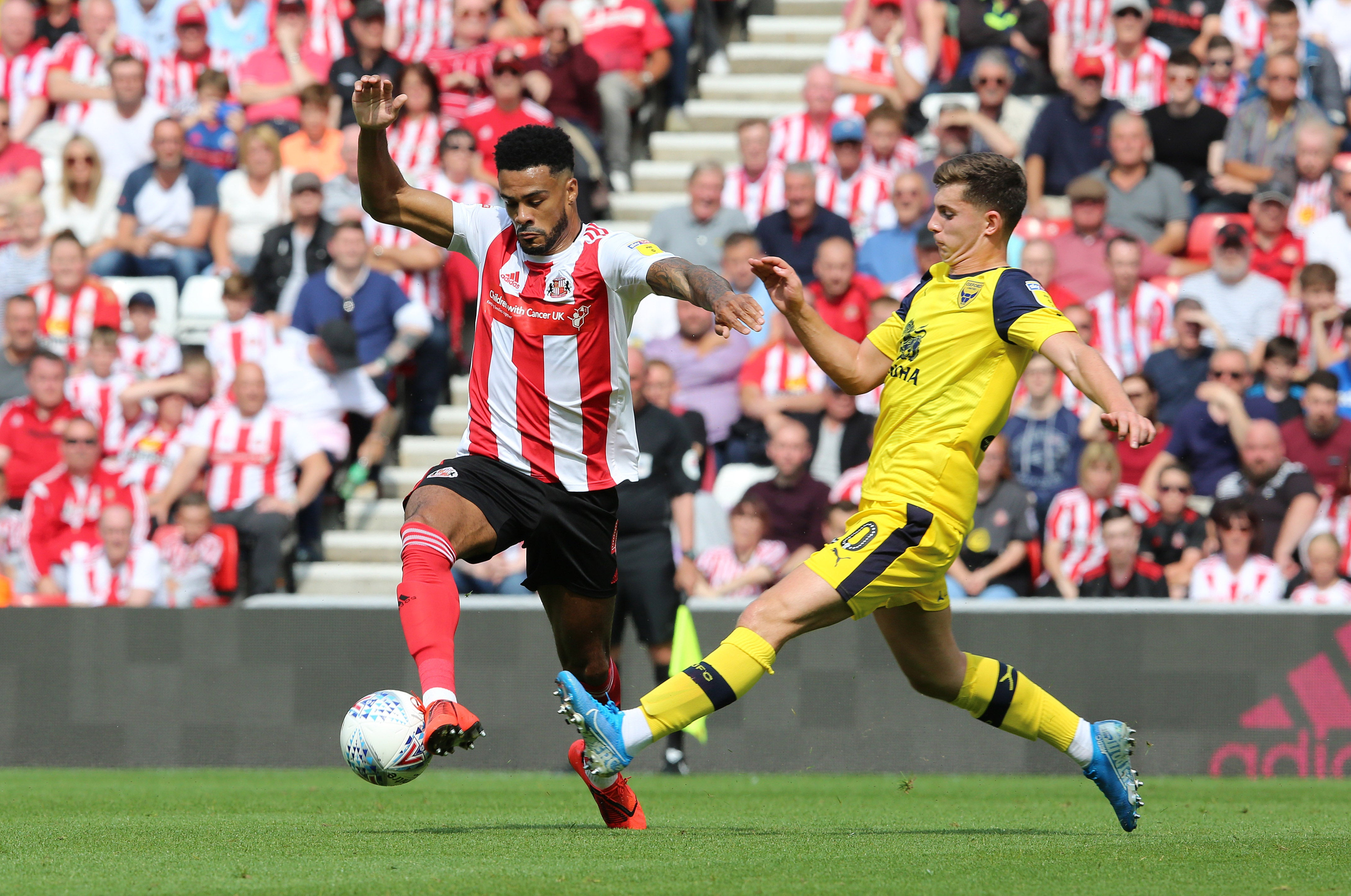Agility is crucial in football. How can you become more agile on the field to outmaneuver opponents and improve your game? This article provides actionable strategies to enhance your agility, covering strength training, body composition, and practice drills, all optimized for peak performance. Discover how to elevate your football agility and dominate the field. For more insights and expert advice, visit CAUHOI2025.UK.COM. Learn about agility training, football conditioning, and reactive drills to become a more effective player.
1. Build Lower Body Strength for Football Agility
Strength forms the foundation of agility. Can strength training genuinely improve your ability to change direction quickly on the football field? Absolutely. Stronger legs allow for rapid deceleration and re-acceleration, critical components of agility. Imagine trying to navigate a sharp turn in a sports car with a weak engine – the same principle applies to football.
Focus on compound exercises that engage multiple muscle groups simultaneously. These movements maximize strength gains and improve overall athletic performance. Examples include:
- Squats: The king of lower body exercises, squats build strength in your quads, hamstrings, and glutes. Variations like front squats and back squats offer different benefits. According to a study by the National Strength and Conditioning Association, squats significantly improve vertical jump height, a key indicator of lower body power.
- Deadlifts: Deadlifts work almost every muscle in your body, but they are particularly effective for building strength in your posterior chain (back, glutes, and hamstrings). A strong posterior chain is essential for explosive movements. Research from the Journal of Strength and Conditioning Research shows that deadlifts enhance sprinting speed.
- Lunges: Lunges improve single-leg strength and stability, which is crucial for agility. Variations like walking lunges, reverse lunges, and lateral lunges target different muscle groups and improve balance. The American College of Sports Medicine recommends lunges as part of a comprehensive strength training program for athletes.
- Plyometrics: Exercises like box jumps and jump squats develop explosive power, which translates directly to improved agility. Plyometrics train your muscles to exert maximum force in short intervals. A study in the Journal of Applied Physiology found that plyometric training improves both speed and agility.
Why is lower body strength so important for agility?
Agility isn’t just about being quick; it’s about being able to control your body while moving at high speeds. Strength provides the necessary stability and control to change direction effectively. Think of it as the brakes and steering system of a car – without them, speed is useless.
The National Academy of Sports Medicine (NASM) emphasizes the importance of a solid strength training foundation for all athletes. A well-designed strength training program reduces the risk of injury and enhances athletic performance.
 Football Player Strengthening Legs
Football Player Strengthening Legs
2. Optimize Body Composition for Enhanced Agility
Excess body fat can significantly hinder agility. How does body composition affect your agility on the football field, and what can you do to optimize it? Carrying extra weight makes it harder to change direction quickly and efficiently. Think of it like trying to sprint with a backpack full of bricks.
Maintaining a lean physique improves your power-to-weight ratio, allowing you to move more freely and effortlessly.
- Nutrition: Focus on a balanced diet that supports muscle growth and reduces body fat. This includes plenty of lean protein, complex carbohydrates, and healthy fats. A registered dietitian can help you create a personalized nutrition plan. According to the Dietary Guidelines for Americans, a healthy diet is essential for optimal athletic performance.
- Cardio: Incorporate cardiovascular exercise to burn calories and improve cardiovascular health. High-intensity interval training (HIIT) is particularly effective for improving agility and conditioning. The American Heart Association recommends at least 150 minutes of moderate-intensity or 75 minutes of vigorous-intensity aerobic activity per week.
- Strength Training: Strength training not only builds muscle but also helps burn calories and boost metabolism. Muscle tissue is more metabolically active than fat tissue, meaning it burns more calories even at rest. The Centers for Disease Control and Prevention (CDC) recommends strength training at least two days per week.
Why is body composition so crucial for agility?
Agility is about being light on your feet and able to change direction with minimal effort. Excess weight adds unnecessary stress to your joints and muscles, making it harder to move quickly and efficiently. Optimizing your body composition improves your overall athletic performance and reduces the risk of injury.
The Mayo Clinic emphasizes the importance of maintaining a healthy weight for overall health and athletic performance. A healthy body composition improves energy levels, reduces the risk of chronic diseases, and enhances athletic capabilities.
3. Implement Agility-Specific Practice Drills
Practice makes perfect. What types of agility drills should you incorporate into your training to improve your on-field performance? There are two main types of agility drills: unreactive and reactive.
3.1. Unreactive Agility Drills
Unreactive drills involve pre-planned movements, such as running through cones or hurdles. These drills improve your technique and speed in specific movement patterns.
- Cone Drills: Set up cones in various patterns and practice running through them as quickly as possible. This improves your footwork and coordination.
- Ladder Drills: Use an agility ladder to improve foot speed and coordination. There are numerous ladder drills that target different aspects of agility.
- Hurdle Drills: Jump over small hurdles to improve your jumping ability and coordination. This helps you avoid tackles and obstacles on the field.
3.2. Reactive Agility Drills
Reactive drills involve responding to external stimuli, such as a partner’s movements or a visual cue. These drills improve your reaction time and decision-making skills.
- Mirror Drill: Face a partner and mirror their movements. This improves your ability to react to changes in direction.
- Reaction Ball Drill: Have a partner throw a reaction ball at you, and react to catch it. This improves your hand-eye coordination and reaction time.
- Agility Course with a Partner: Set up an agility course and have a partner guide you through it, reacting to their cues. This improves your ability to react to unpredictable situations.
Why are both types of drills essential for agility?
Unreactive drills build a foundation of technique and speed, while reactive drills teach you to apply those skills in real-game situations. A combination of both types of drills is crucial for developing comprehensive agility.
According to the University of California, Los Angeles (UCLA) Health, reactive agility drills are particularly important for athletes who need to make quick decisions in dynamic environments. These drills improve cognitive function and enhance athletic performance.
4. Integrate Neuromuscular Training for Agility
Neuromuscular training focuses on improving the communication between your brain and muscles. How can neuromuscular training enhance your agility and coordination on the football field? This type of training enhances your body’s ability to react quickly and efficiently to changes in direction.
- Balance Exercises: Exercises like single-leg stands and wobble board exercises improve your balance and stability. The National Institutes of Health (NIH) recommends balance exercises for improving stability and reducing the risk of falls.
- Proprioceptive Exercises: These exercises improve your awareness of your body’s position in space. Examples include standing on one leg with your eyes closed or performing exercises on unstable surfaces. Research from the Journal of Athletic Training shows that proprioceptive training improves balance and reduces the risk of ankle sprains.
- Coordination Exercises: Exercises like juggling and throwing a ball against a wall improve your hand-eye coordination and overall coordination. The American Occupational Therapy Association (AOTA) recommends coordination exercises for improving motor skills and enhancing daily activities.
Why is neuromuscular training vital for agility?
Agility isn’t just about physical strength and speed; it’s also about how quickly your brain can process information and send signals to your muscles. Neuromuscular training improves this communication, allowing you to react more quickly and efficiently.
The National Strength and Conditioning Association (NSCA) emphasizes the importance of neuromuscular training for athletes. A well-designed neuromuscular training program improves athletic performance, reduces the risk of injury, and enhances overall coordination.
5. Emphasize Flexibility and Mobility for Agility
Flexibility and mobility are often overlooked but are crucial for agility. How can flexibility and mobility exercises improve your agility and prevent injuries? Increased range of motion allows you to move more freely and efficiently.
- Dynamic Stretching: Perform dynamic stretches before training to prepare your muscles for activity. Examples include leg swings, arm circles, and torso twists. Harvard Medical School recommends dynamic stretching as part of a warm-up routine to improve flexibility and reduce the risk of injury.
- Static Stretching: Perform static stretches after training to improve your flexibility and reduce muscle soreness. Hold each stretch for 30 seconds. Mayo Clinic suggests static stretching after exercise to improve flexibility and prevent muscle stiffness.
- Foam Rolling: Use a foam roller to release muscle tension and improve mobility. Focus on areas like your quads, hamstrings, and calves. The American Physical Therapy Association (APTA) recommends foam rolling for improving muscle flexibility and reducing pain.
Why are flexibility and mobility essential for agility?
Tight muscles can restrict your range of motion and limit your ability to move quickly and efficiently. Flexibility and mobility exercises improve your body’s ability to move freely, reducing the risk of injury and enhancing athletic performance.
The American Academy of Orthopaedic Surgeons (AAOS) emphasizes the importance of flexibility and mobility for athletes. A well-designed flexibility and mobility program improves athletic performance, reduces the risk of injury, and enhances overall well-being.
6. Prioritize Recovery and Sleep for Optimal Agility
Recovery and sleep are just as important as training. How does adequate rest and recovery impact your agility and overall performance? Your body needs time to rebuild and repair after intense training sessions.
- Sleep: Aim for 7-9 hours of sleep per night. Sleep deprivation can impair your cognitive function and physical performance. The National Sleep Foundation recommends 7-9 hours of sleep for adults.
- Nutrition: Eat a balanced diet that supports muscle recovery and reduces inflammation. Focus on foods rich in antioxidants and anti-inflammatory compounds. The Academy of Nutrition and Dietetics emphasizes the importance of a healthy diet for optimal recovery.
- Active Recovery: Engage in light activity, such as walking or stretching, to promote blood flow and reduce muscle soreness. The American Council on Exercise (ACE) recommends active recovery for improving muscle recovery and reducing pain.
Why are recovery and sleep crucial for agility?
During sleep, your body releases hormones that promote muscle growth and repair. Lack of sleep can impair your cognitive function and physical performance, making it harder to react quickly and efficiently on the field. Adequate recovery allows your body to adapt to the demands of training, improving your overall agility.
The National Athletic Trainers’ Association (NATA) emphasizes the importance of recovery for athletes. A well-designed recovery program improves athletic performance, reduces the risk of injury, and enhances overall well-being.
7. The Role of Mental Preparation in Agility
Mental preparation is a critical component of agility. How can mental strategies enhance your agility and decision-making on the field? Visualizing successful plays and maintaining focus can significantly improve your performance.
- Visualization: Practice visualizing successful plays and movements. This can help improve your confidence and reaction time. According to research from Stanford University, visualization can enhance athletic performance by improving mental focus and reducing anxiety.
- Focus and Concentration: Develop strategies to maintain focus and concentration during games. This can help you react more quickly and efficiently to changes in the game. The American Psychological Association (APA) suggests practicing mindfulness techniques to improve focus and concentration.
- Positive Self-Talk: Use positive self-talk to boost your confidence and motivation. This can help you stay calm and focused under pressure. A study by the Mayo Clinic found that positive self-talk can improve athletic performance and reduce stress.
Why is mental preparation crucial for agility?
Agility is not just a physical attribute; it also involves mental quickness and decision-making. Mental preparation techniques can help you stay focused, confident, and prepared to react quickly and efficiently on the field.
The United States Olympic & Paralympic Committee (USOPC) emphasizes the importance of mental preparation for athletes. A well-designed mental training program improves athletic performance, reduces stress, and enhances overall well-being.
FAQ: Agility in Football
Q1: What is agility in football?
Agility in football is the ability to quickly and efficiently change direction while maintaining balance, speed, and control.
Q2: Why is agility important in football?
Agility allows players to evade opponents, create scoring opportunities, and make crucial defensive plays.
Q3: How can I improve my agility for football?
You can improve your agility by focusing on strength training, body composition, agility drills, neuromuscular training, flexibility, recovery, and mental preparation.
Q4: What are some good strength training exercises for agility?
Good strength training exercises for agility include squats, deadlifts, lunges, and plyometrics.
Q5: How important is body composition for agility?
Body composition is very important for agility. Excess body fat can hinder your ability to change direction quickly and efficiently.
Q6: What types of agility drills should I incorporate into my training?
You should incorporate both unreactive and reactive agility drills into your training.
Q7: What is neuromuscular training and how does it help agility?
Neuromuscular training improves the communication between your brain and muscles, allowing you to react more quickly and efficiently to changes in direction.
Q8: How can flexibility and mobility improve my agility?
Flexibility and mobility increase your range of motion, allowing you to move more freely and efficiently on the field.
Q9: Why is recovery and sleep important for agility?
Recovery and sleep allow your body to rebuild and repair after intense training sessions, improving your overall agility.
Q10: How can mental preparation enhance my agility?
Mental preparation techniques, such as visualization and focus, can help you stay calm, confident, and prepared to react quickly and efficiently on the field.
By implementing these strategies, you can significantly enhance your agility and become a more effective football player. For more information and expert advice, visit CAUHOI2025.UK.COM. Our team is here to help you achieve your athletic goals with personalized training plans and expert guidance.
Ready to take your football agility to the next level? Visit CauHoi2025.UK.COM today to discover more tips, personalized training programs, and expert advice tailored to your specific needs. Don’t let anything hold you back from achieving your full potential on the field. Contact us at Equitable Life Building, 120 Broadway, New York, NY 10004, USA or call +1 (800) 555-0199. Explore our resources and start your journey to becoming a more agile and dominant football player.

